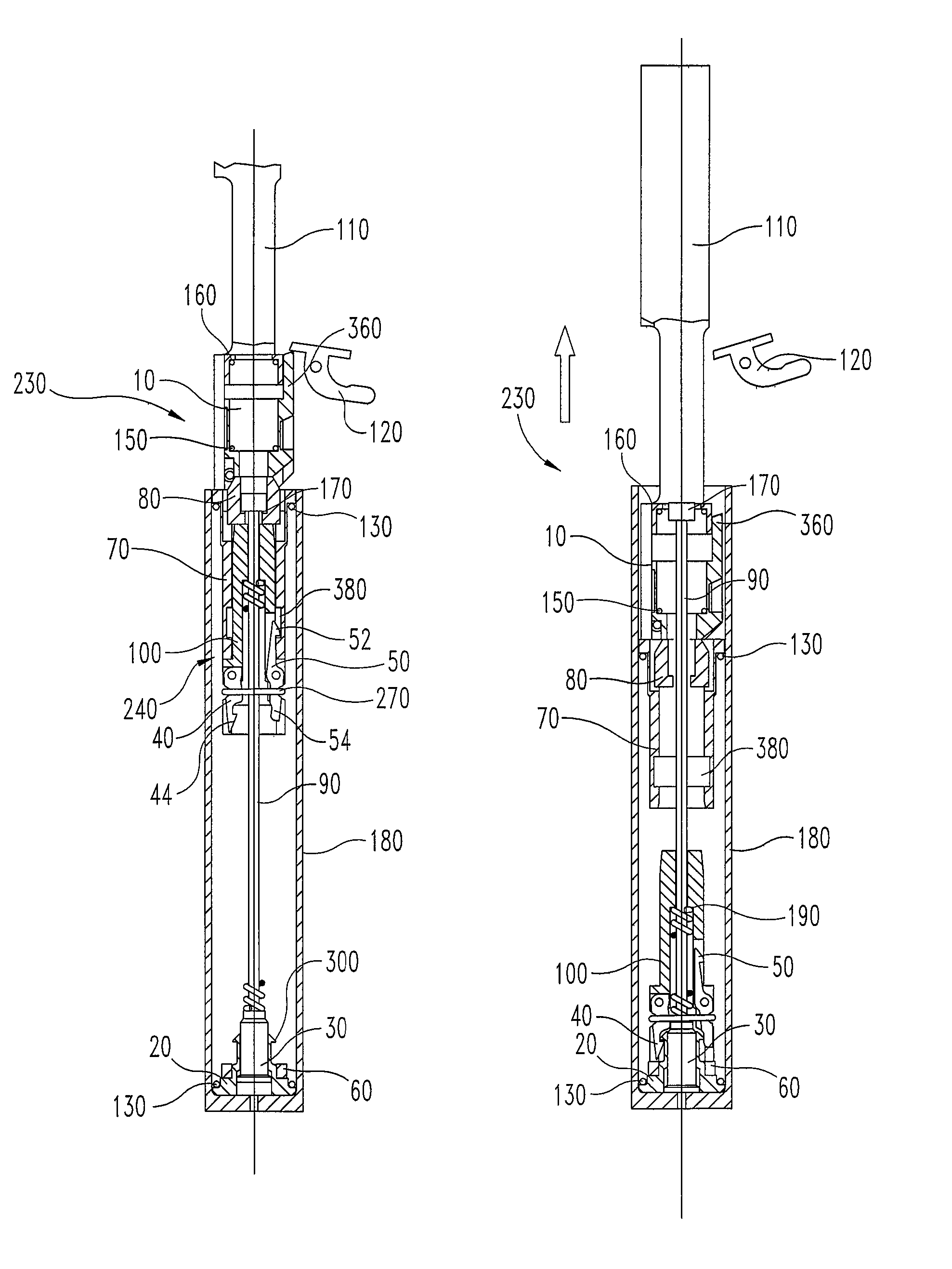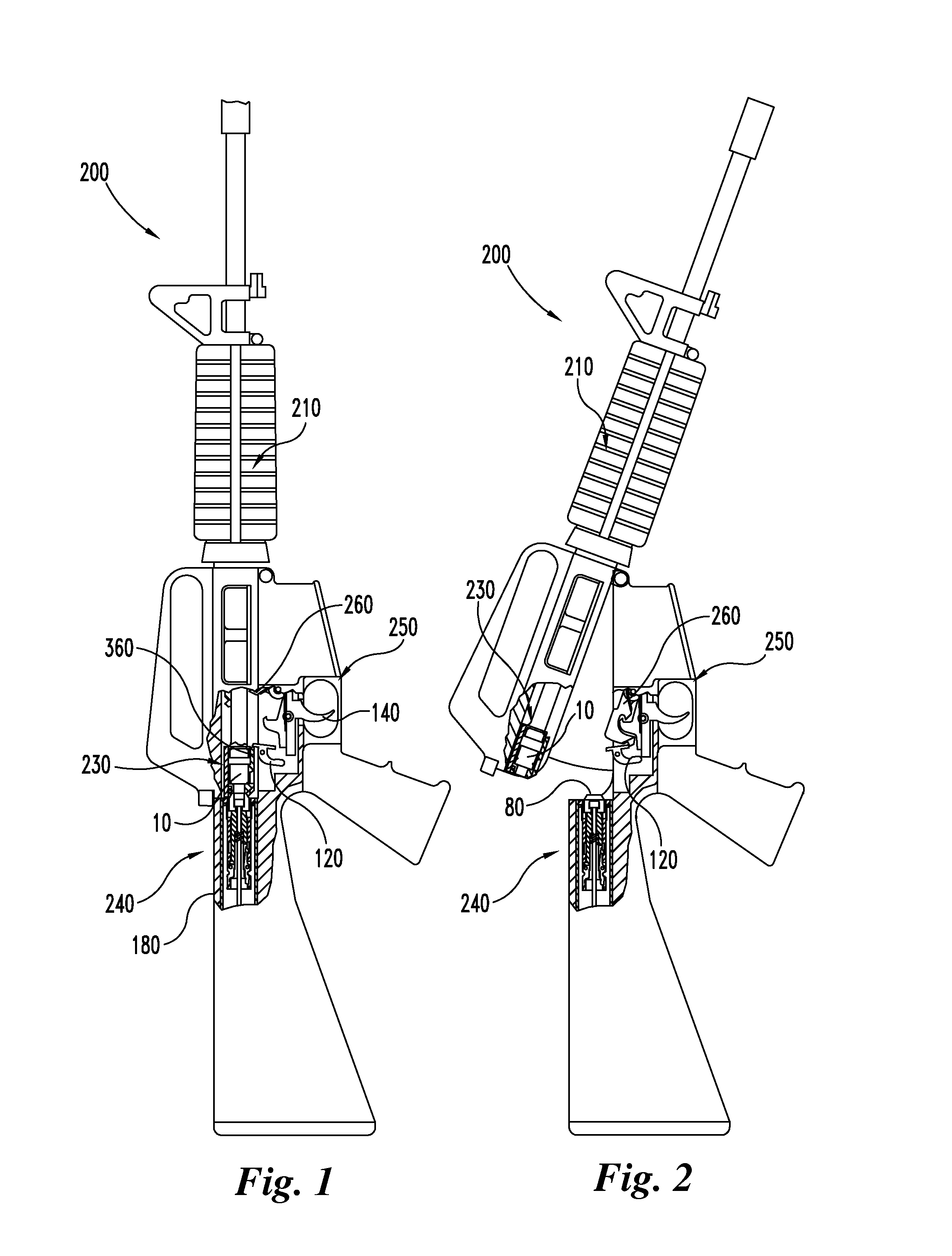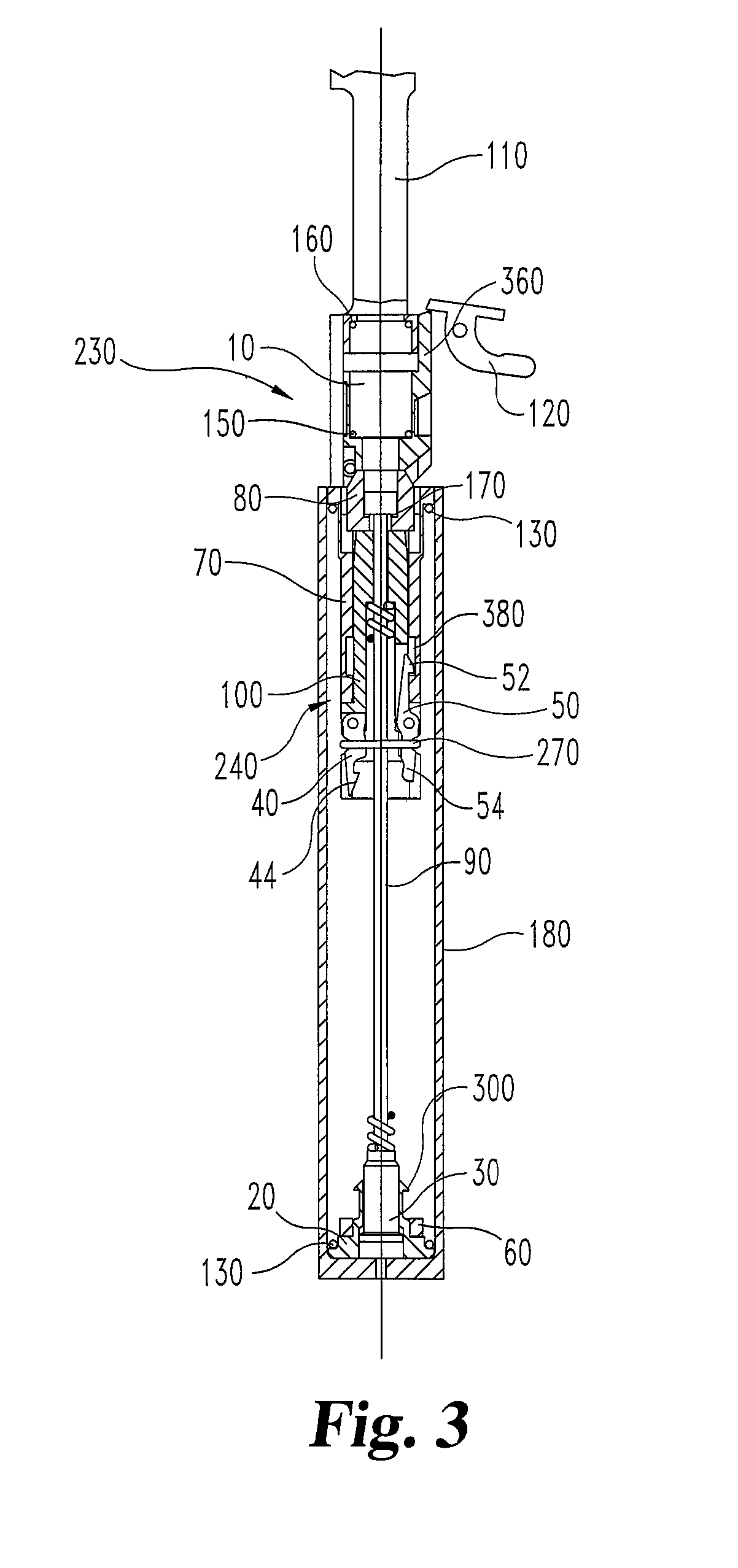Rate control mechanism
a rate control and rate technology, applied in the direction of firing/trigger mechanism, weapon components, weapons, etc., can solve the problems of uncontrollable weapon movement off target, serious safety hazards for fellow soldiers and bystanders, and the natural cyclic rate of a firearm may not be the optimal cyclic rate, so as to reduce the cyclic rate of a self-powered firearm
- Summary
- Abstract
- Description
- Claims
- Application Information
AI Technical Summary
Benefits of technology
Problems solved by technology
Method used
Image
Examples
Embodiment Construction
[0046]For the purposes of promoting an understanding of the principles of the disclosure, reference will now be made to the embodiments illustrated in the drawings and specific language will be used to describe the same. It will nevertheless be understood that no limitation of the scope of the invention is thereby intended, such alterations and further modifications in the illustrated device, and such further applications of the principles of the invention as illustrated therein being contemplated, as would normally occur to one skilled in the art to which the invention relates.
[0047]Embodiments of the present disclosure incorporate a “rate reducer,” namely a cyclic rate reducing mechanism applicable to the M16 / M4 family of weapons in particular. While described in the context of an M16 / M4 type of system, the rate reducer can be readily scaled to be applicable for larger caliber M16 style firearms, as well as being applicable to other weapons employing similar operating systems, and...
PUM
 Login to View More
Login to View More Abstract
Description
Claims
Application Information
 Login to View More
Login to View More - R&D
- Intellectual Property
- Life Sciences
- Materials
- Tech Scout
- Unparalleled Data Quality
- Higher Quality Content
- 60% Fewer Hallucinations
Browse by: Latest US Patents, China's latest patents, Technical Efficacy Thesaurus, Application Domain, Technology Topic, Popular Technical Reports.
© 2025 PatSnap. All rights reserved.Legal|Privacy policy|Modern Slavery Act Transparency Statement|Sitemap|About US| Contact US: help@patsnap.com



